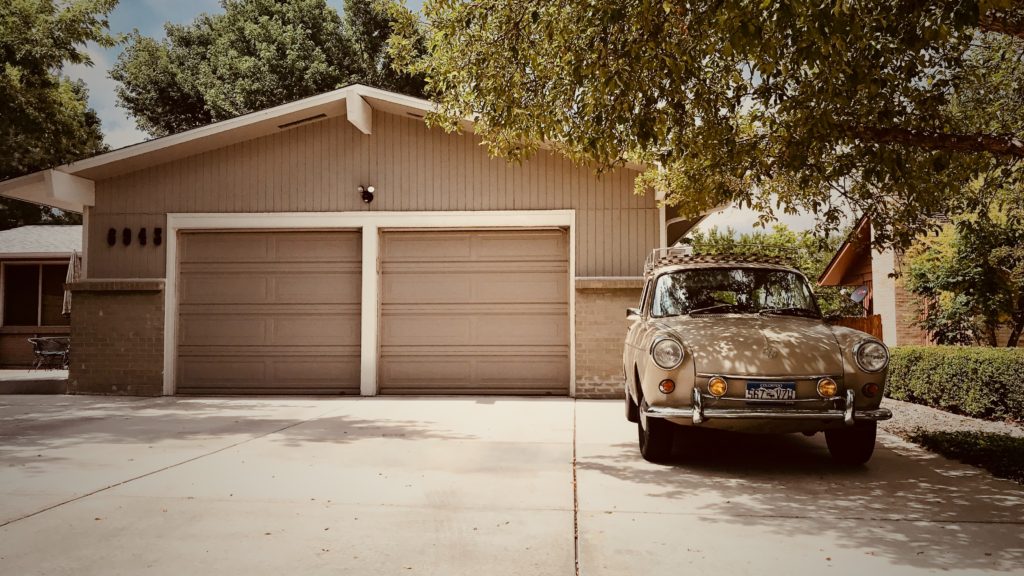
Amazon, Apple, Disney, Google and Hewlett Packard all started in one. The garage is a uniquely American icon and metaphor – and it has happened too many times to ignore.
Some of my earliest experiences in design, innovation, materials and fabrication occurred in the family garage under the mentorship of my father and uncles. Between them, they were skilled in tool and die making, carpentry and heavy vehicle mechanics. It turns out in addition to being a place to teach, the garage is also a great place to start a company.
For the next few posts, we are going to explore the idea of the garage – both metaphorically and practically – and its role in modern day organizational innovation and growth. We’ll talk about how to create one in your own organization, how to know if it’s performing, when to scale it up or down, how to source leadership for it and how to keep the sponsors excited about funding it. Perhaps most importantly, we’ll talk about how these garages are a key to unlocking the next growth wave for the US market.
There is a lot to be learned by looking at the essential attributes of the garage and connecting the dots to present day research and observation. For today’s post, let’s discuss six attributes that make these structures such a hotbed of innovation.
Focus
When people take on a challenge in a garage environment, the problem they take on tends to be very specific. It is being addressed in a bounded space with bounded resources, so the problem is reduced to its essentials. These tend to be reach out areas that usually start with “what if” questions with specific, tangible outcomes.
Apple was building 50 computers, HP was building an audio oscillator (that was later purchased by Disney). Likewise, Amazon sold books, Google worked on the algorithm and Disney produced some of their first movie shorts.
Proximity
Research has shown over and over again that tightly aligned, physically close teams outperform those which are widely dispersed. When you want to have a quick problem solving session, you make a circle of chairs or stand around the item that needs attention. Everyone is nearby and supports one another.
Being able to quickly reduce ideas to practice in person has its own accelerating effect. The idea of calling a formal review is ludicrous – everyone of importance is already there and aware of the successes and failures.
Fun
People who work together in garages usually have an affinity for one another: they self select each other as volunteers, shoot baskets when they need a break and barbecue burgers when the need food. They customize their work spaces with drawings, jokes, and artifacts of ideas that may or may not have worked. A high functioning garage has practical jokes and laughter.
Cultures are born in this environment. People at HP challenged themselves to behave like “Bob and Dave” for decades after their initial garage time. Steve and Woz laid a foundation for their (sometimes challenging) relationship while working side by side.
Low Overhead
Small, multipurpose spaces allow the seeds of a company to be experimented with and restarted in numerous ways until air fills the sails. In the meantime, low overhead drives maximum creativity for small investments. All of the famous garages started as spare-time endeavors, funded by day jobs or bootstrapped from the beginning. An internal garage for your company has the same minimal overhead – just the time and space for your team to run with the ideas.
An interesting thing about garage endeavors – they bring the best out of partners when you ask for support or the latest device. Steve Jobs was famous for making audacious requests of large organizations to keep the project moving forward.
Dedication
A garage environment allows a degree of focus and off the grid dedication that is hard to repeat in the “real world.” When you are working in a garage environment, it’s hard to keep it from creeping into the rest of your life. The projects are fun and challenging, and you’re working with people who become close friends. A conversation with a loved one might spark a new idea for your current garage challenge, and you may well jeopardize your relationship by cutting date night short to go back to the garage and test it out!
Myths and legends are created in this environment. Solving the insurmountable problem, working all night to get the units shipped, experimenting with a new product line for the online store only to sell many more than you thought – the garage accomplishments have their own mythos that doesn’t appear in larger environments.
Loose / Agile Structure
By necessity, the team in a garage must be both talented and versatile. This is a resource-poor environment, so you need the software guy to be willing to solder boards for a while, or the machinist to develop some skills in electronics and measure circuits if needed. But that scarcity in resources is also key to the success of the environment.
The flexibility and natural cross training is key to what makes these innovation hubs so potent. It has been observed frequently that breakout ideas rarely come from experts in the field, but from polymaths who cross over academic and trade boundaries and bring expertise from another field to bear on the current issue. Velcro, expandable heart stents and Post-Its are all example of boundary crossing insights.
What memory comes to mind when you think about the word “Garage”? Did you or do you still build interesting things there? Have any of those experiences changed the way you see innovation? Please drop me a line or Tweet me with your thoughts.
Related posts you can benefit from…

